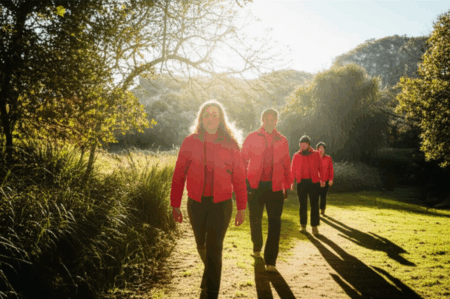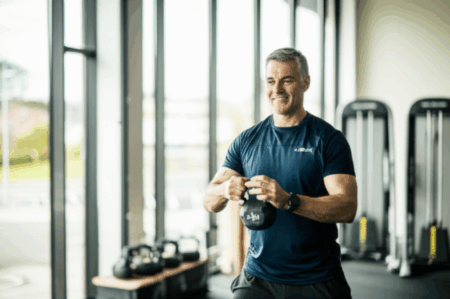The weather, often an overlooked factor, plays a significant role in dictating the effectiveness, safety, and enjoyment of your workout and exercise routine. From scorching heat and stifling humidity to freezing temperatures and poor air quality, various atmospheric conditions can profoundly influence your body’s physiological responses and overall performance. Understanding these impacts and knowing how to adapt can help you maintain consistency in your fitness journey, rain or shine.
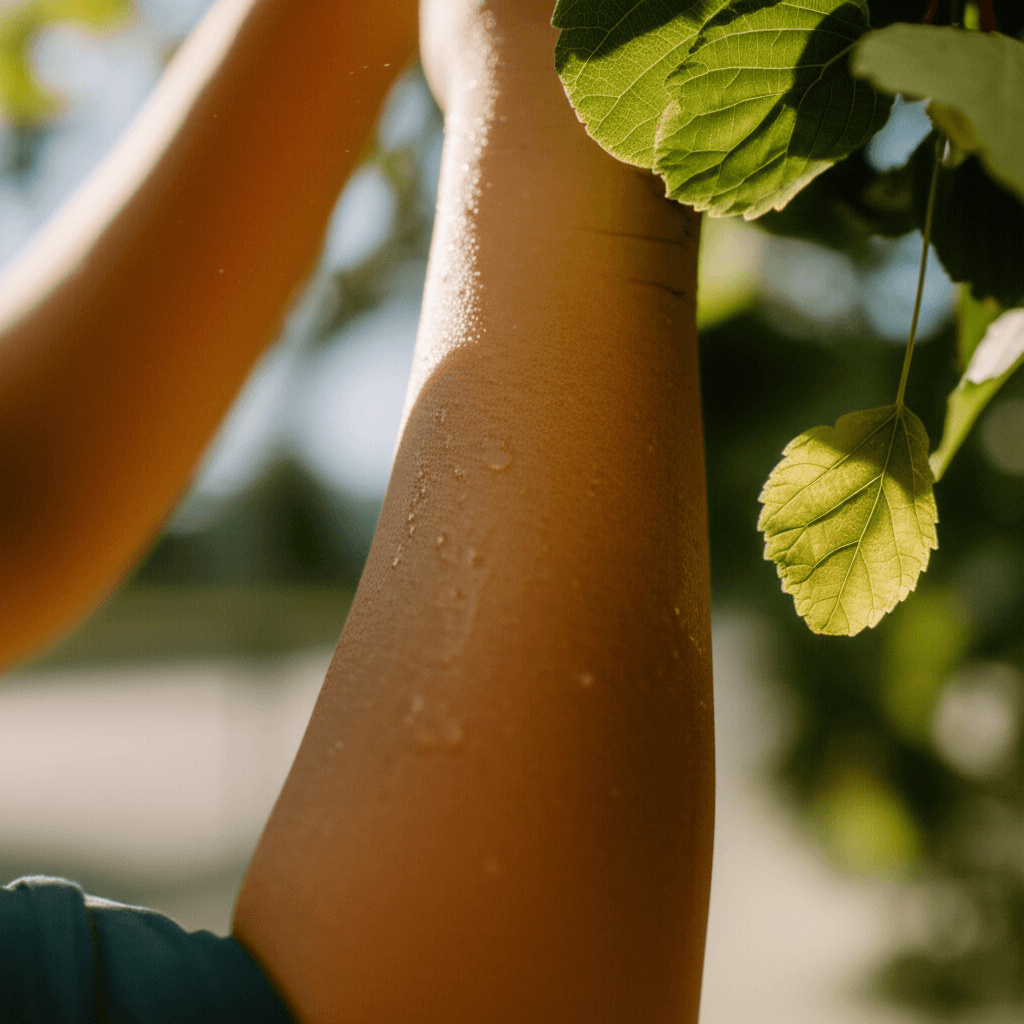
Hot Weather and High Humidity: The Double Whammy
Exercising in hot and humid conditions presents a significant challenge to your body’s natural cooling mechanisms.
The Dangers of Heat and Humidity
When you exercise, your core body temperature rises. In hot weather, especially with high humidity, your body struggles to cool itself efficiently through sweating. Humidity prevents sweat from evaporating quickly from your skin, which is crucial for heat release. This can lead to an increased heart rate as your heart works harder to circulate blood to the skin to facilitate cooling, leaving less blood flow for the working muscles.
Risks associated with exercising in the heat and humidity include:
- Dehydration: Excessive sweating without adequate fluid replacement can lead to dehydration, making your blood thicker and harder for your heart to pump.
- Heat Cramps: Often the mildest form of heat illness, characterized by muscle spasms due to fluid and electrolyte loss.
- Heat Exhaustion: A more severe condition with symptoms like fatigue, dizziness, headache, nausea, heavy sweating, and cool, moist skin.
- Heat Stroke: A life-threatening emergency where the body’s core temperature rises above 103°F, leading to hot, red, dry skin (no sweating), rapid heart rate, confusion, or loss of consciousness. Immediate medical attention is crucial.
Smart Strategies for Hot and Humid Workouts
To safely exercise in warm conditions, consider these tips:
- Timing is Key: Avoid outdoor workouts during the hottest parts of the day, typically between noon and 3 p.m. Opt for early morning or late evening when temperatures are cooler.
- Hydrate Consistently: Drink water before, during, and after your workout, even if you don’t feel thirsty. For intense or prolonged exercise, sports drinks can help replenish electrolytes lost through sweat.
- Dress Appropriately: Wear lightweight, loose-fitting, and light-colored clothing made of moisture-wicking fabric. Dark colors absorb heat, and excessive clothing can trap heat.
- Acclimatize Gradually: Allow your body 4-14 days to adapt to exercising in the heat. Start with shorter, less intense workouts and gradually increase duration and intensity.
- Listen to Your Body: Take frequent breaks in the shade and be aware of the signs of heat-related illness. If you experience symptoms, stop exercising immediately and cool down.
- Indoor Alternatives: If conditions are too severe, move your workout indoors to an air-conditioned gym, mall, or try home-based exercises.
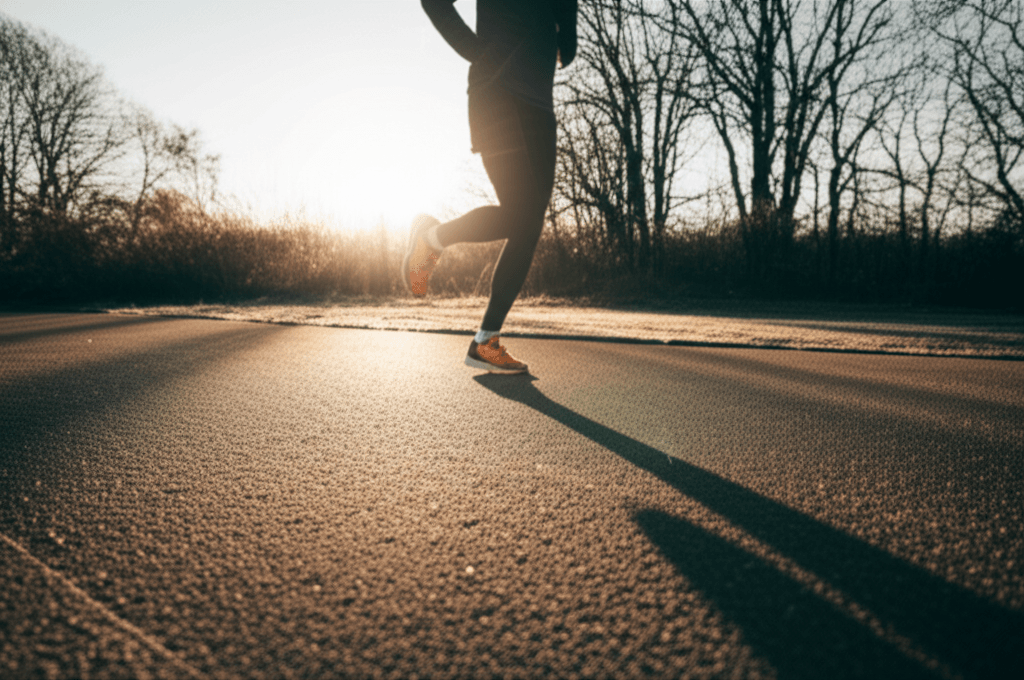
Cold Weather: Embracing the Chill
While less discussed, cold weather also poses unique challenges and benefits for exercise.
How Cold Weather Affects Performance and Safety
Exercising in cold temperatures forces your body to work harder to maintain its core temperature. This can lead to increased calorie burn but also faster fatigue. Cold muscles are less efficient, potentially decreasing power output and increasing lactate levels. There are also direct health risks:
- Hypothermia: Occurs when the body loses heat faster than it can produce it, leading to abnormally low body temperature. Symptoms include intense shivering, slurred speech, loss of coordination, and fatigue.
- Frostbite: Results from the freezing of body tissue, often affecting exposed skin like cheeks, nose, ears, hands, and feet. Early signs include numbness or a stinging sensation.
- Increased Injury Risk: Cold temperatures can make muscles tighter and more prone to strains and sprains, highlighting the importance of a thorough warm-up.
- Dehydration: Despite cooler temperatures, dehydration can still occur as fluids are lost through respiration and sweating, often less noticeably than in heat.
Essential Cold Weather Workout Tips
Staying active in the cold requires careful planning:
- Layer Your Clothing: Dress in layers using synthetic, moisture-wicking material as a base, followed by insulating fleece or wool, and a waterproof/windproof outer shell. This allows you to remove layers as you warm up to prevent excessive sweating.
- Protect Extremities: Wear a hat or headband, gloves (thin liners under heavier ones), and thermal socks. Consider shoes slightly larger than normal to accommodate thicker socks.
- Proper Footwear: Choose shoes with good traction to prevent slips and falls on icy or snowy surfaces.
- Stay Hydrated: Drink water before, during, and after your workout. Avoid caffeine and alcohol as they can contribute to dehydration.
- Warm-Up Thoroughly: Dynamic stretching and light movement before heading out are crucial to prepare muscles and improve circulation.
- Be Visible: With less daylight in winter, wear reflective clothing if exercising in the dark.
- Check Wind Chill and Conditions: Wind chill can make temperatures feel much colder, increasing the risk of frostbite. Avoid exercising outdoors if wind chills drop too low (e.g., below 17 degrees Fahrenheit).
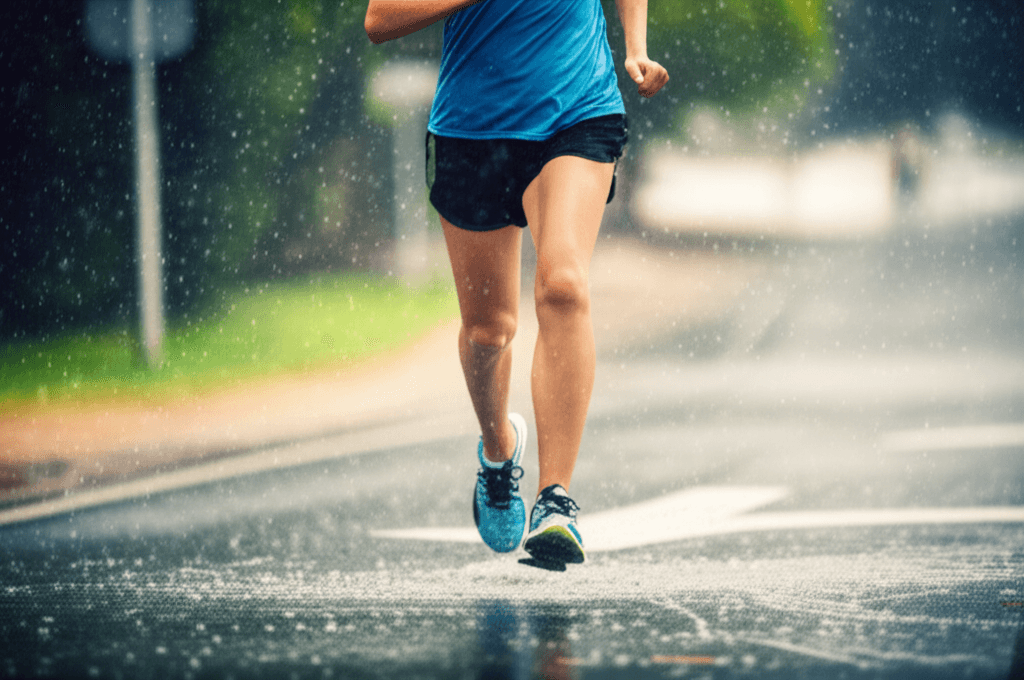
Rain: Overcoming the Wet Obstacle
Rain often deters outdoor exercisers, but with the right approach, it doesn’t have to derail your routine.
Impact of Rainy Conditions
Rain can bring several challenges:
- Slippery Surfaces: Wet roads, trails, and sidewalks increase the risk of slips, falls, and injuries like sprains or fractures.
- Reduced Visibility: Rain can impair visibility, making it harder to spot obstacles or be seen by vehicles, especially in low light.
- Discomfort and Chafing: Wet clothes and shoes can cause discomfort, chafing, and distraction.
- Increased Fatigue: Navigating rainy conditions can require more physical and mental effort, leading to quicker exhaustion.
Tips for Rainy Day Workouts
- Waterproof Gear: Invest in a breathable raincoat or poncho, and waterproof pants to stay dry. Waterproof shoes and socks can keep your feet comfortable.
- Layer Up: Even in rain, layering is effective. A moisture-wicking base layer, insulating mid-layer (if cold), and waterproof shell are ideal.
- High-Visibility Clothing: Wear bright or reflective gear to enhance visibility for others.
- Adjust Your Route: Choose familiar routes, avoid slippery surfaces, and be mindful of puddles.
- Embrace the Indoors: When the rain is too heavy or conditions unsafe, consider indoor alternatives like gym workouts, home exercise videos, or walking in a mall.

Wind: The Unseen Resistance
Wind can significantly impact outdoor workouts, making even a mild temperature feel much colder and increasing exertion.
How Wind Affects Exercise
- Increased Effort: Running or cycling against the wind requires considerably more effort, leading to increased fatigue and a slower pace for the same perceived effort.
- Enhanced Cooling: Wind can rapidly draw heat away from your body, increasing the risk of hypothermia, especially when combined with cold temperatures or moisture.
- Skin Irritation: Wind can dry out skin and lips, particularly in colder months.
- Balance and Form: Strong gusts can affect balance and force you to adjust your form, potentially leading to inefficient movement.
Strategies for Windy Workouts
- Windproof Clothing: Wear a windproof outer layer to block the wind’s chilling effect.
- Protect Exposed Skin: Cover your neck, head, ears, and hands with hats, headbands, snoods, or gloves. Sunglasses can protect your eyes from wind and debris.
- Plan Your Route: If possible, start by running or riding into the wind, so you have the wind at your back on the return leg.
- Adjust Expectations: Don’t worry about maintaining your usual pace; focus on effort. Wind resistance will naturally slow you down.
- Aerodynamic Form: Try to minimize your profile by tucking elbows in and maintaining a neutral head position to reduce wind resistance. Avoid hunching over.
- Hydrate: Wind can contribute to dehydration by drying out your mouth and skin.
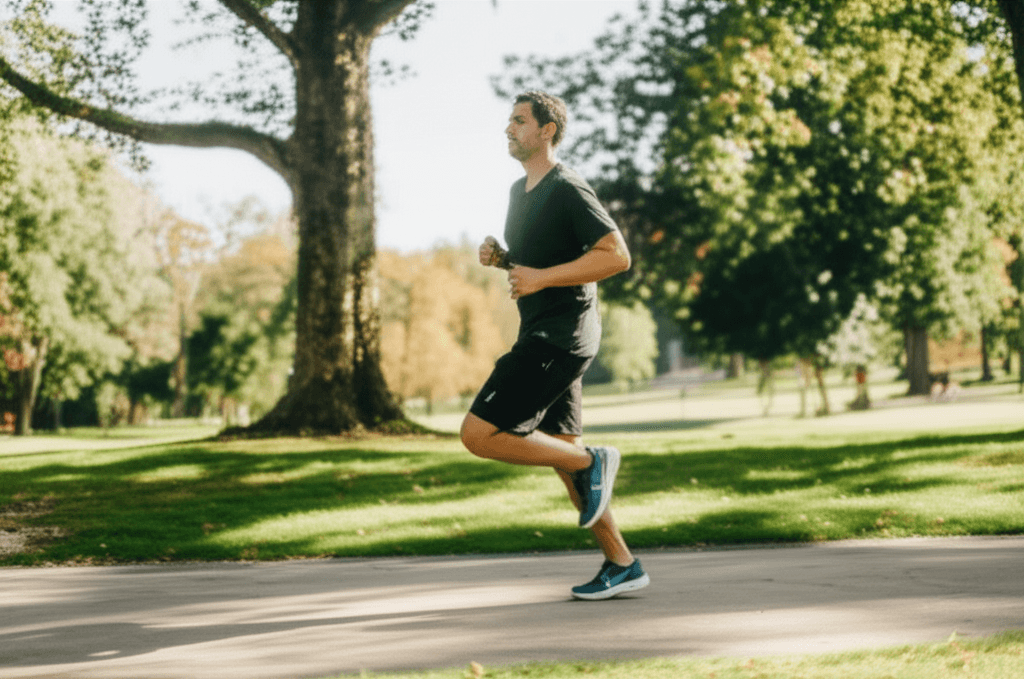
Air Quality: Breathing Easy While You Work Out
Poor air quality, whether from pollution, pollen, or wildfires, poses a direct threat to respiratory health during exercise.
Risks of Exercising in Poor Air Quality
When exercising, you breathe more deeply and frequently, drawing more air (and potential pollutants) into your lungs. The body’s natural filtration systems are less effective when breathing through the mouth during exertion. This can lead to:
- Respiratory Issues: Irritation, inflammation, and reduced lung function.
- Cardiovascular Stress: Increases in heart rate and blood pressure.
- Aggravation of Conditions: Worsening of asthma and other respiratory or cardiovascular conditions.
Safeguarding Your Lungs
- Check the Air Quality Index (AQI): Before exercising outdoors, consult local AQI reports (e.g., AirNow.gov) to assess pollution levels.
- Modify or Move Indoors:
- Good (0-50 AQI): Safe for outdoor exercise.
- Moderate (51-100 AQI): Generally acceptable, but sensitive groups should consider reducing prolonged or heavy exertion.
- Unhealthy for Sensitive Groups (101-150 AQI): Sensitive individuals (those with lung or heart problems, older adults, children) should limit outdoor activity or move indoors.
- Unhealthy (151-200 AQI) or Higher: Avoid outdoor exercise entirely.
- Timing and Location: Avoid exercising during rush hour or peak ozone times (often afternoon). Choose locations away from busy roads and areas with high buildings that trap pollution.
- Consider a Mask: N95 respirators can filter fine particulate matter, though they may feel uncomfortable during intense exercise.
- Listen to Your Body: If you experience headache, lightheadedness, increased heart rate, or difficulty breathing, stop exercising.
By recognizing how different weather conditions affect your body and adopting appropriate strategies, you can ensure your exercise routine remains safe, effective, and enjoyable throughout the year.





